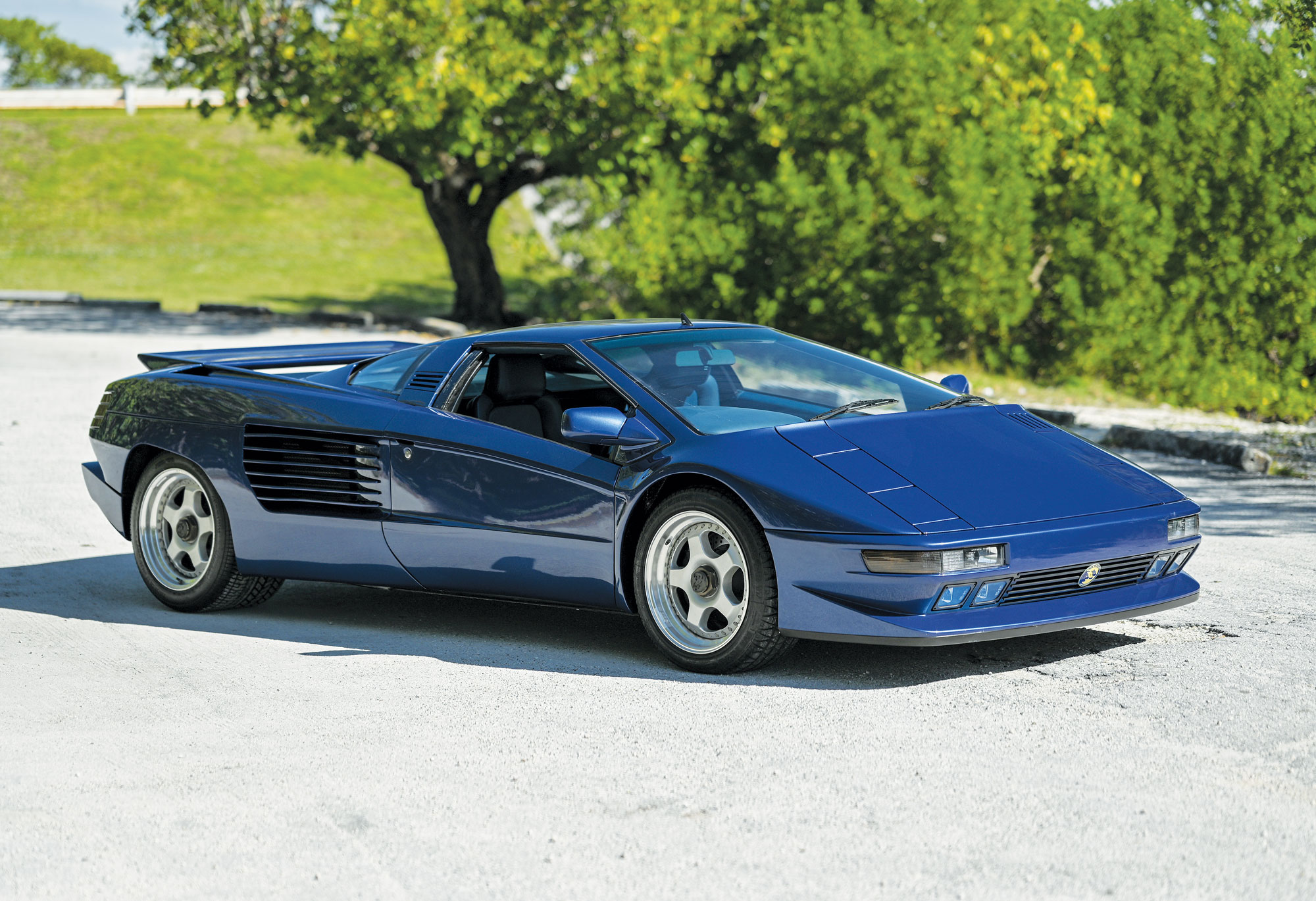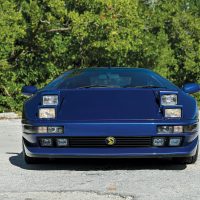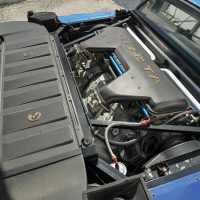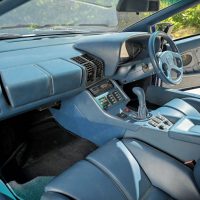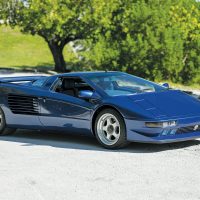SCM Analysis
Detailing
| Vehicle: | 1993 Cizeta V16T |
| Years Produced: | 1991–2003 |
| Number Produced: | 10 (nine in original production run) |
| Tune Up Cost: | $15,000 |
| Chassis Number Location: | Stamped on top of right-side engine subframe diagonal |
| Alternatives: | 1991–95 Bugatti EB110, 1992–94 Jaguar XJ220, 1989–93 Vector W8 |
This car, Lot 139, sold for $665,000, including buyer’s premium, at RM Sotheby’s Arizona sale on January 22, 2021.
Just as the Jurassic period gave way to the Cretaceous period, the early 1990s marks a crucial historical moment, when the exotic car was eclipsed by the birth of the modern supercar. Before 1990, the term “exotic car” was used to describe those rare vehicles with low ground clearance, unconventional doors and oodles of horsepower. The quintessential exotic was the Lamborghini Countach.
From exotic to supercar
Production of the Countach ceased in 1990, and it was replaced by the much more powerful and advanced Diablo. Around the same time, several other ultra-high-performance cars appeared on the market, such as the Jaguar XJ220, the Vector W8 and the Bugatti EB110. These special cars were more than members of an exclusive club — they represented an entirely new movement.
These new cars were produced in ultra-low numbers and generated enormous horsepower that could catapult them to well over 200 mph. Design flourishes included scissor doors, big wings, oversized air intakes and ultra-low hood lines. Given their astronomical prices, radical styling, ludicrous capabilities and outlandish specs, these next-generation exotics required a new definition all their own. Thus the term “supercar” entered the automotive lexicon.
Zampolli’s vision
The Cizeta V16T was to be another of these new supercars, a bombastic and pioneering creation and the brainchild of Claudio Zampolli. A former Lamborghini engineer and test driver, Zampolli was born in Modena, the epicenter of Italian race cars. He moved to Los Angeles in the 1980s and established himself as the go-to maintenance expert for celebrity-owned Italian exotics. Folklore has it that he introduced the late Eddie Van Halen to Sammy Hagar.
Zampolli eventually connected with Countach owner and multiple Grammy- and Academy Award-winning musician Giovanni Giorgio Moroder, who helped finance the original Cizeta-Moroder prototype. Sometime during development, the pair had a falling out and parted ways. When the car finally reached production, “Moroder” was dropped from the name and the car was badged Cizeta (pronounced “chey-zeta,” an abbreviation of Zampolli’s initials).
A sweet 16
Several key Lamborghini employees were hired on to help develop Zampolli’s dream car. Marcello Gandini, designer of the Miura, Countach and Lancia Stratos, penned the wild bodywork. The front half of the exterior bears a striking resemblance to the Diablo — save the Cizeta’s unique pop-up quad headlights. Zampolli directed the final design, stretching the engine bay to fit the transverse-mounted V16.
That was the V16T’s point of distinction: Instead of being powered by a V12, it employed a real V16. The motor comprises two Lamborghini Urraco V8s carefully cast together into a single block. Engineered by Oliviero Pedrazzi, it features 64 valves, eight camshafts, four cylinder heads and produces 540 hp and 400 ft-lb of torque.
The massive motor sits within a chassis constructed from hand-made lightweight chrome-moly tubing. The Cizeta’s rear track is a staggering 81 inches wide. Performance was incredible for its day, of course, and impressive even by today’s standards. The 0–60-mph sprint occurs in four seconds and top speed is more than 200 mph.
Highly original and unique
As you might expect, the V16T is extremely rare, with only nine manufactured during its initial production run. A 10th car, a Cizeta Fenice TTJ Spyder, was manufactured in 2003 by special order. (For the record, Zampolli’s website indicates that he is still willing to fulfill new orders.)
Our subject car is most certainly the lowest-mileage and most-original Cizeta left on the planet, showing just over 1,000 kilometers. Curiously, this car is made even more special by its horizontal air-intake slats (all other production examples had vertical slats). Our subject car also wears a unique color, a striking deep blue with a matching interior.
Miami-based dealer Curated imported this Cizeta in 2020. We spoke to a Curated representative who received the car and clarified that it was in excellent condition upon arrival. The Bruno Paratelli-designed interior needed some work, but the exterior paint and bodywork were perfect. An overall reconditioning and sorting occurred, including installation of new gaskets and a comprehensive and meticulous service.
Curated’s Herschel Zelcer noted, “The car itself feels incredibly well put-together, and the power delivery is smooth and consistent. The V16 is incredible, with a jet engine-like sound. This quality and attention to detail makes the Cizeta feel like a substantial step up from Diablos of that era. This car could have been a segment leader at its time.”
“You get the sense that a real engineer designed the Cizeta, and many details like carbon fiber are used liberally throughout the engine bay. Cizeta logos are etched in everything — an indication that this project was more about passion than profit,” Zelcer said. “It also seems as if nothing on this car was sourced from a parts bin, as even the a/c vents were bespoke and specifically designed only for the Cizeta.”
A cheap and exclusive date
Our subject car’s recent outcome at RM Sotheby’s Arizona auction is curious, if not surprising. Cizeta V16T chassis 101 is an authentic, 30-year-old supercar with a unique, valid, and compelling history. It checks all the boxes on arguably the most crucial aspect of collectibility — originality. If we are talking about early supercar artifacts with legitimate stories, it is hard to top this one. That it happens to be engineered, designed, and manufactured by the exclusive and capable hands that brought us groundbreaking Lamborghinis such as the Miura, Countach and Diablo is just a bonus.
That said, the sale price of $665,000 seems low considering a new Cizeta was $650,000 in 1993 dollars. At a time when zero-mile 1980 Ford F250s are fetching six-figure prices, this Lamborghini-inspired, passion-built supercar seems like it can only have an upside for its new owner. Well bought. ♦
(Introductory description courtesy of RM Sotheby’s.)
